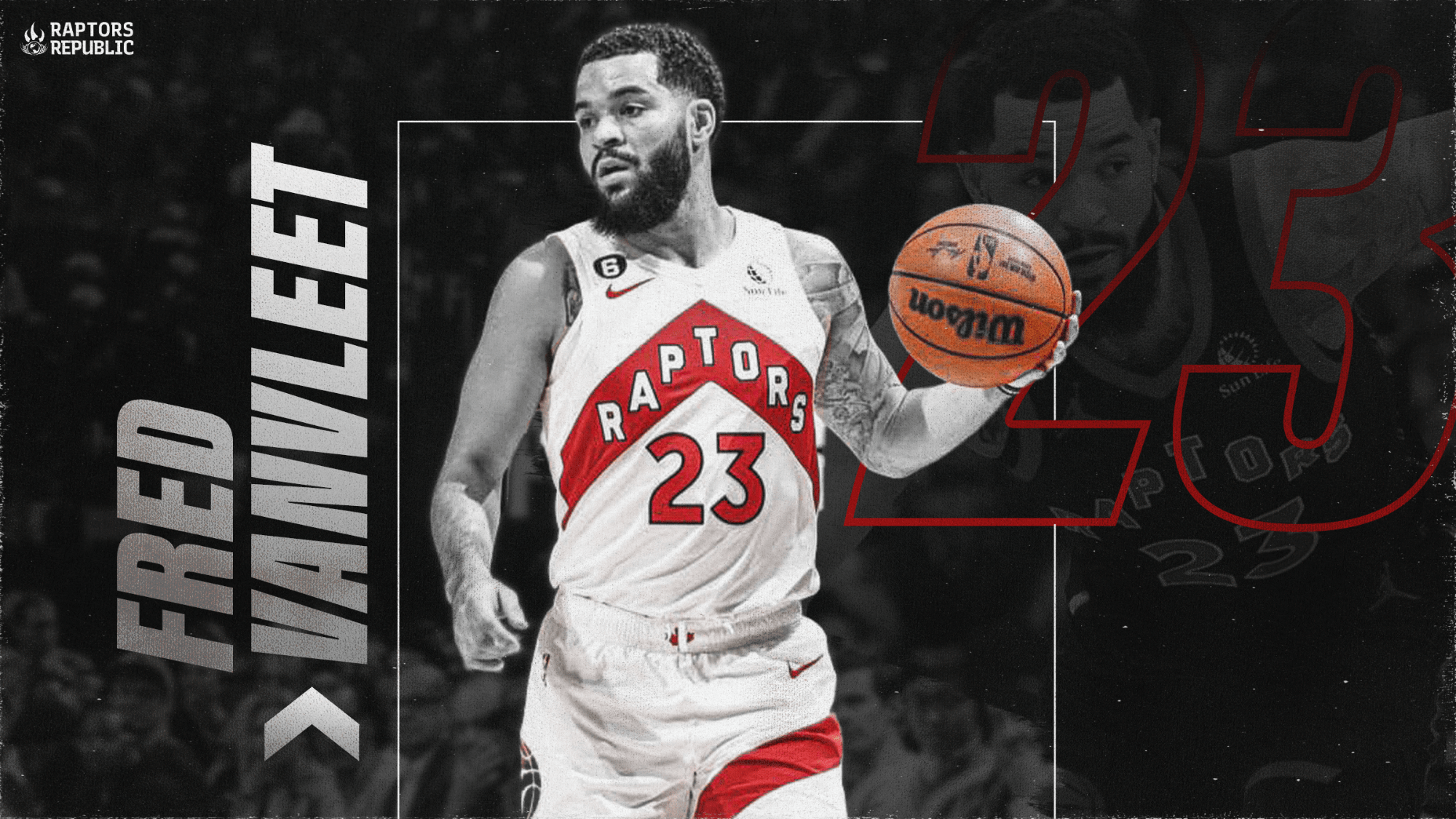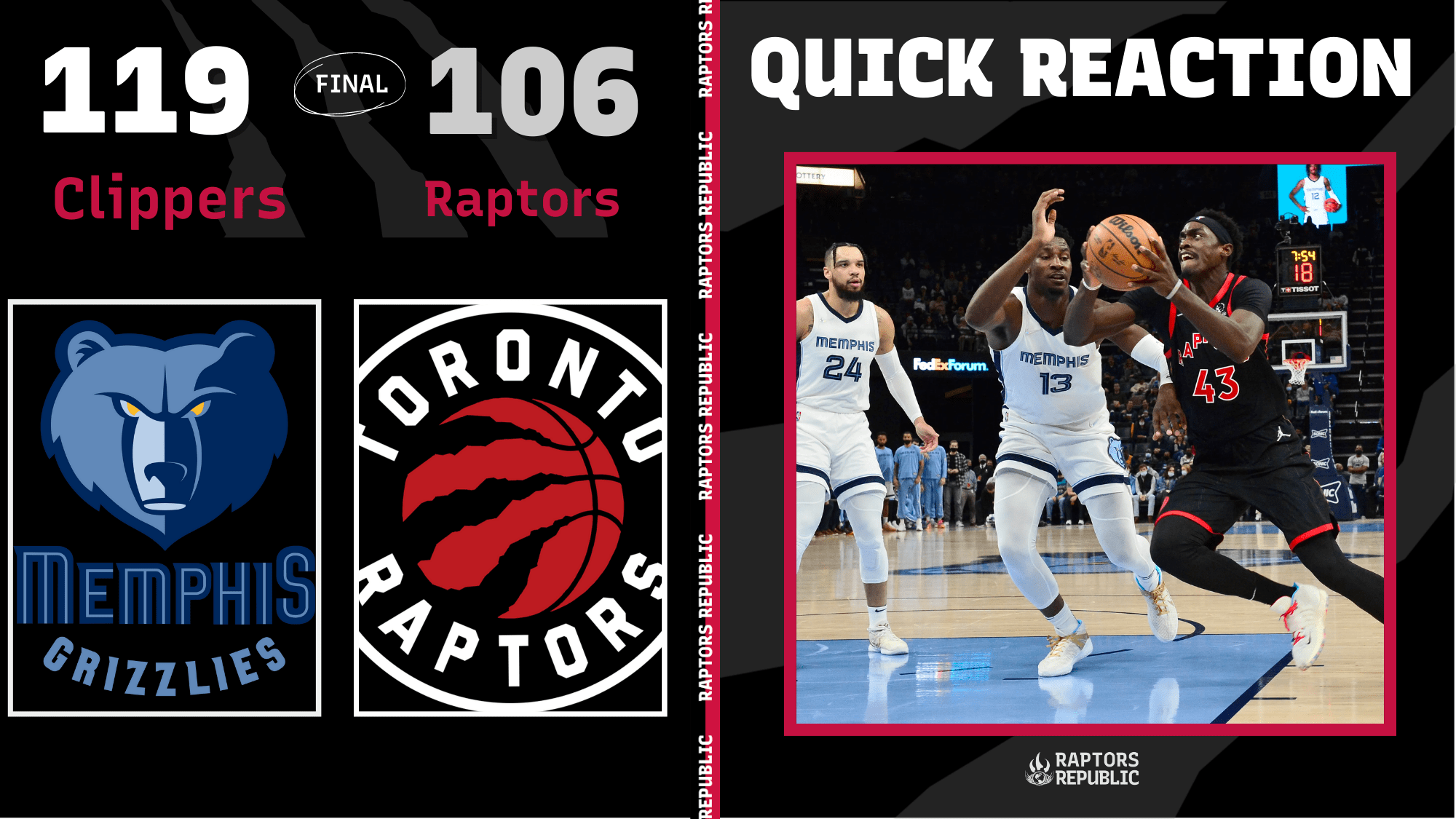There is always a Toronto Raptors’ player who earns the ire of the fan base. No matter what he does, no matter how he is perceived throughout the rest of the league, he will always be a lightning rod for fan derision and message boards asking for the player to be traded.
From: Vince Carter for both his on-court and off-court antics (perhaps more deserved, especially in 2004, than the others here). DeMar DeRozan for his lack of defense and unfashionable love for the mid-range game. Pascal Siakam, for, of all things, his spin move, as well as his Bubble performance. And for the last two years it seems, Fred VanVleet has joined the list for dribbling too much, for his lack of size, and lately his 3-point shooting woes.
For VanVleet, it’s nothing new to be unappreciated.
There is a reason Fredderick Edmund VanVleet did not get drafted. He is not everyone’s cup of tea. At six feet in basketball shoes and 197 pounds, he looks more like a rec league player than the NBA All Star that he is. On a team branded as Vision Six-Nine, that is blessed with long, athletic players, he stands out like a sore thumb. He doesn’t even have that speed and quickness that you associate with small guards like Damon Stoudemire, Isaiah Thomas or even Jose Alvarado. His athleticism coming out of college was so poorly regarded that he wasn’t even offered an invite to the combine.
Instead, what he has are those mysterious qualities called intangibles. In particular a stubborn, irrational belief in himself, a dogged determination to win, leadership, and a basketball IQ that is off the charts.
It’s easy to devalue Fred because what he does is often so nuanced while his weaknesses are overt and in your face.
Nothing says Fred VanVleet more than watching him defend the point of attack for a stifling Raptors’ defence. Especially against a lightning-quick point guard. Put him into those situations and he becomes a matador with a raging bull in front of him. He knows that he can’t compete with the bull physically; instead he is there to steer the bull to places that the bull has no interest in going. Move an attacker away from the left elbow where he shoots 52 percent, two feet further out to the wing where he shoots only 44 percent. Remember from watching film that a particular player doesn’t guard the ball well when he lifts his head and looks to pass left, wait for it, and then pounce for a clean strip.
On the surface, these little micro adjustments are undetectable to the untrained eye. Over the course of a game, VanVleet’s contributions add up and often make the difference between winning and losing. Over the course of a season they create a conversation for All-NBA defensive teams. Do the Raptors give up blowbys sometimes as a result? Sure. But the team is consistently better on defense, over and over again throughout his career, with him on the floor rather than on the bench. And when he’s guarding off ball, even against the best cutters in the world, VanVleet becomes the bull and quick-twitch guards his hapless and gored victims.
On the offensive side, Fred’s subtleties abound. The read-and-react offense that the Raptors run operates on creating slight miscues from the defense. When those miscues are read properly and the correct counters are run, the offensive engine purrs and hums. When those mistakes aren’t identified — or aren’t created — the engine begins to cough and sputter. Too often during Toronto’s losing streak, the entire machine clunked to complete halts, leaving coach Nick Nurse very little in the way of roadside assistance.
Offensively, Fred’s job is to, as Louis Zatzman says, “bend the defense” extending the Einstensian allegory of gravitational pull and its effect on time and space, onto the basketball court.
As an example, Fred may have the ball at the top of the circle and notice the right corner defender is too close to his guard. If he can attack the paint at the right angle and force the defense to react to his penetration, it can open up a lane for his teammate in the corner to cut to the basket for a pass and an easy layup. If the cutter misreads the play, the ball handler is stuck out of position, pounding the rock while he scrambles for another read. Causes and effects, especially for cerebral guards like VanVleet, can blend when it comes to things like overdribbling.
Within this ever-changing, dynamic environment, it’s much easier to focus on the ball-handler than the other offensive pieces that surround him. Yahoo’s Amit Mann and C.J. Miles had a great discussion about the need for Fred’s teammates to be more assertive in their actions. Their success in reads off the ball helps VanVleet’s reads on the ball. To be fair, he’s not dominant enough to make up for teammates’ passivity a la Kyle Lowry before him.
Unfortunately he is and will most probably always be a streaky shooter. When he is on, look out. When he is off, it’s downright ugly. Just look at his 3-point shooting percentages through the championship run. In the first two series against Orlando and Philadelphia he shot 6-of-30 for a putrid 0.200 percent. Against the Bucks and Golden State he shot a ridiculous 45-of-68 or 66.1 percent from deep. But always remember, no matter what, his shooting has always come around.
The difference is that he was a rotation player during that time, and Nurse was able to allocate his minutes according to his effectiveness. He began the Orlando series playing 25ish minutes a game, and by the Philly series he was down to 15 or so minutes a game. As his shooting heated up, his minutes increased into the low 30s per game. The Raptors didn’t need him until he pushed them over the top. Now that Toronto needs him more than ever, his streakiness is harder to stomach.
But VanVleet always returns to prominence, and even after a lengthy cold streak for him, he was back to shooting 38.0 percent from deep for a stretch of five games. Still, there were losses that likely would have been avoided if VanVleet had shot better from deep, and that’s the knife’s edge of relying so heavily on him. Then VanVleet drifted back to the other side of the coin, shooting 0-for-3 from deep before leaving with back soreness. The variability marches onward.
The issue of overreliance may not be Fred’s fault, and it may not be Nurse’s. The front office tried to make a trade for a defensively inclined, back-up point guard but were spurned by both Malcolm Brogdan and Dennis Schroder. And indeed, Malachi Flynn’s growing into a larger role both in terms of effectiveness and minutes has coincided with the Raptors’ putting their losing streak to bed. Perhaps VanVleet would be at his best, again, if the team didn’t need him to be at his best, game in and game out.
To complicate VanVleet’s contributions, the current iteration of Toronto’s roster has no real shot-blocker to anchor the defense; VanVleet doesn’t always have a big to whom he can funnel his raging bulls. This heightens the importance of closing down the point of attack in the half-court because once that first defender is blown by, easy dunks or wide open corner threes are about to follow. Thus Toronto’s context once again limits VanVleet’s contributions. Still, Nurse, who doesn’t suffer fools gladly, especially on the defensive end, trusts Fred complicitly. So much so that he hardly takes him off the floor. Playing 37 minutes a night only augments his recent difficulties on the offensive end.
If the future of basketball is Victor Wembanyama, then Fred VanVleet is a holdover from the days of Dr. James Naismith. It’s easier to picture him with a handlebar moustache, clutching onto a broomstick and prodding the ball out of a peach basket than it is to see him as the leader of an at-times, very good NBA basketball team.
Wembanyama after all is the very picture of modern basketball, freakishly long with never-before-seen athleticism and skills for a man of his height and length. One look and it is evidently apparent that he has been blessed by the basketball gods. Fred on the other hand looks like your everyday man on the street. There is nothing remarkable about his physique or athleticism. He is Clarke Kent. But underneath that meek and mild exterior lies a heart of a champion and what seems on the surface to be a jumbled cornucopia of gifts, which, when bundled together, create an extraordinary player. A frustrating player, and a streaky player, and a scheme-dependent one, but a brilliant one nonetheless.
In a world of highlight reels and outrageous athletic feats, Fred is a man of subtlety and substance. He requires specific context to be the best he can be, but he’s still helpful regardless.
Love him or leave him, he is worth your patience.



